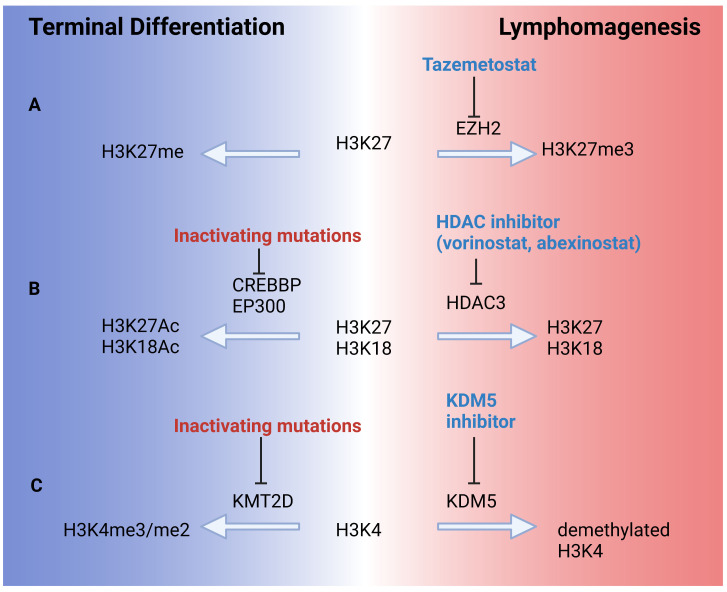Figure 2.
Epigenetic dynamics in follicular lymphoma. Frequent epigenetic mutations in follicular lymphoma result in repression of mature B-cell differentiation factors and cell regulators, preventing terminal differentiation and exit from the cell cycle. This allows a germinal center phenotype, genomic instability, and cellular proliferation to persist. (A) Activating mutations in EZH2 result in aberrant trimethylation of lysine 27 in histone 3 (H3K27me3), resulting in transcriptional silencing and lymphomagenesis. Tazemetostat inhibits EZH2, restoring normal H3K27 methylation. (B) Loss-of-function mutations in the histone acetyltransferases CREBBP and EP300 result in decreased acetylation of histones H3K27 and H3K18, shifting the balance toward histone deacetylation by HDAC3. Histone deacetylase inhibitors prevent this deacetylation. (C) KMT2D is a histone methyltransferase and is frequently inactivated in follicular lymphoma, favoring demethylation of H3K4 and repression of key differentiation genes. Inhibitors of the demethylase KDM5 restore normal H3K4 methylation and gene expression in KMT2D-mutant lymphoma. HDAC: histone deacetylase.

